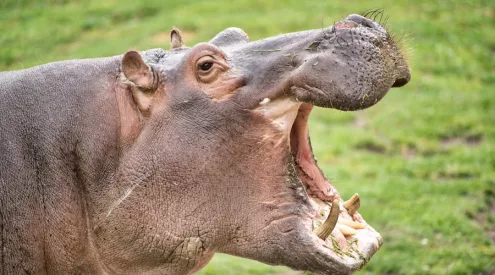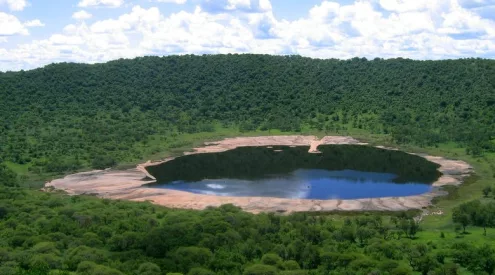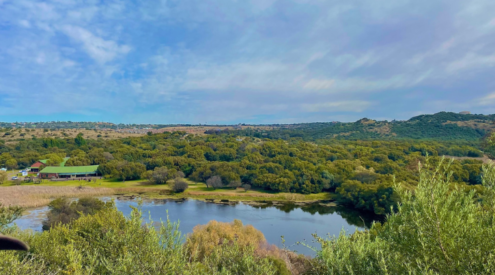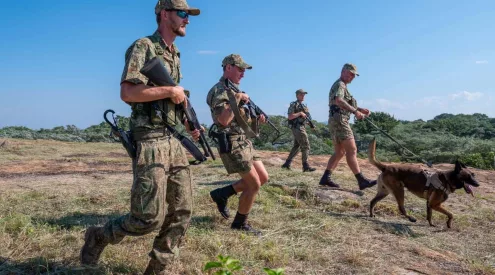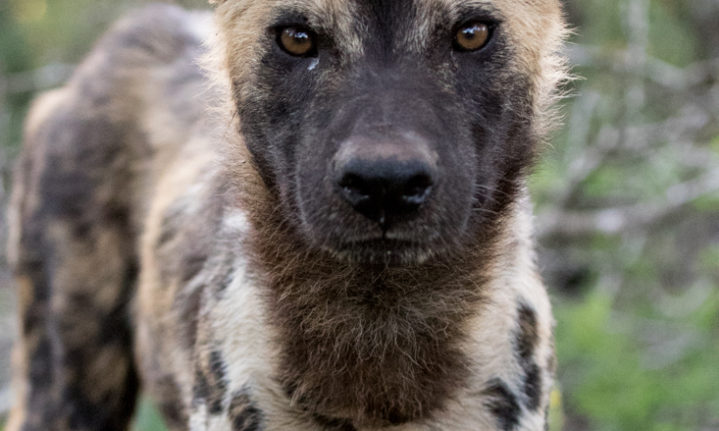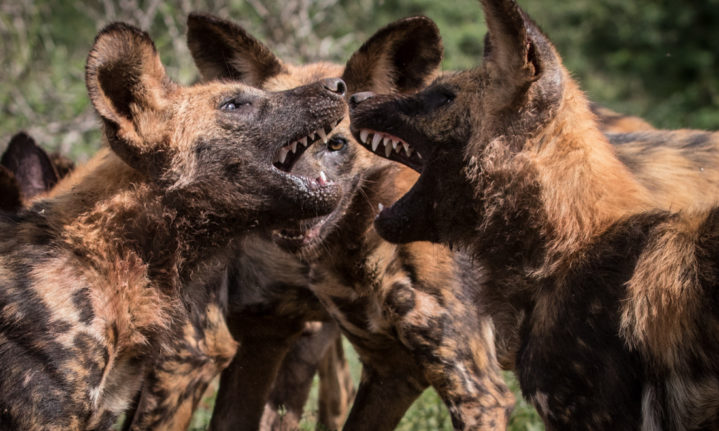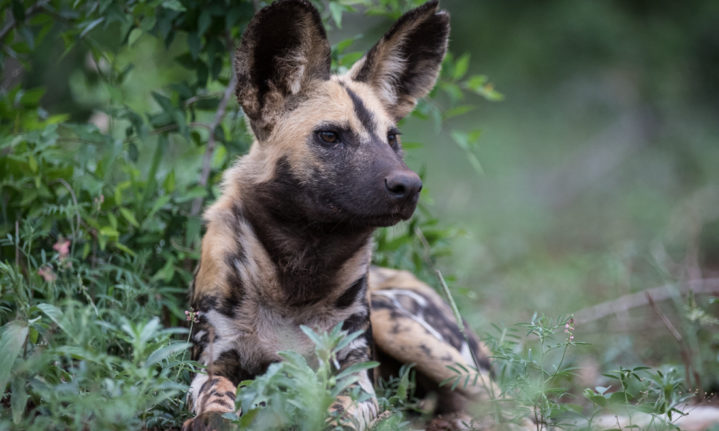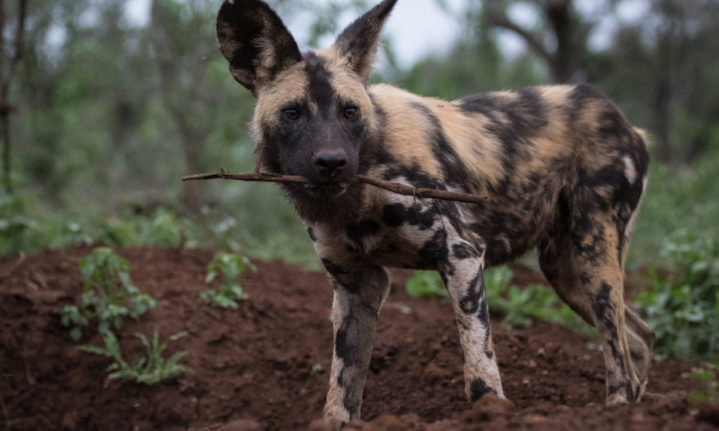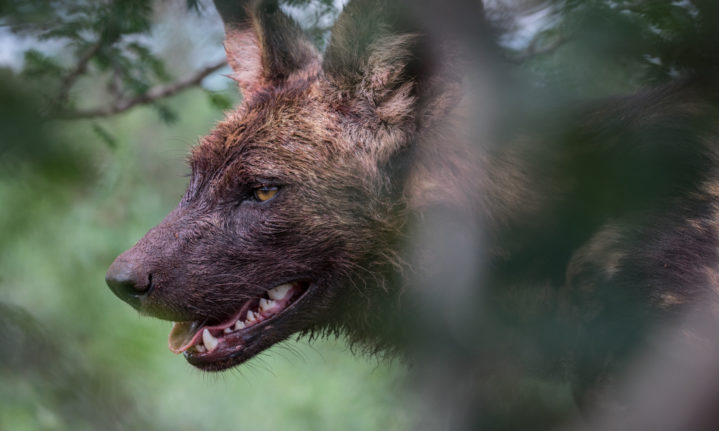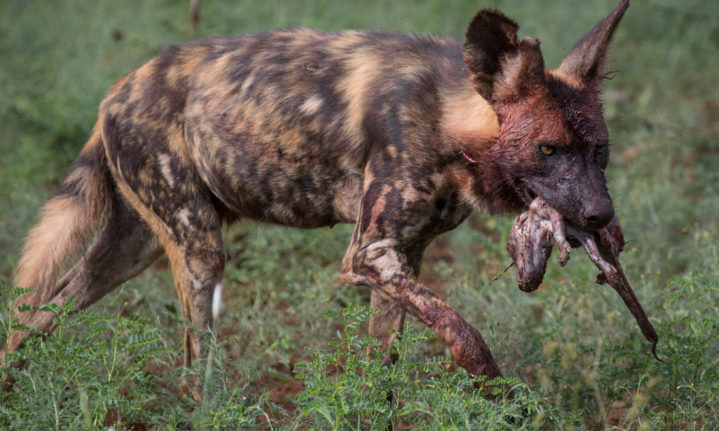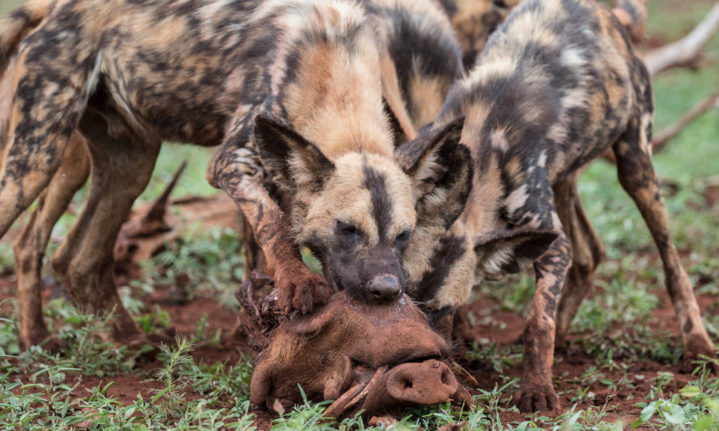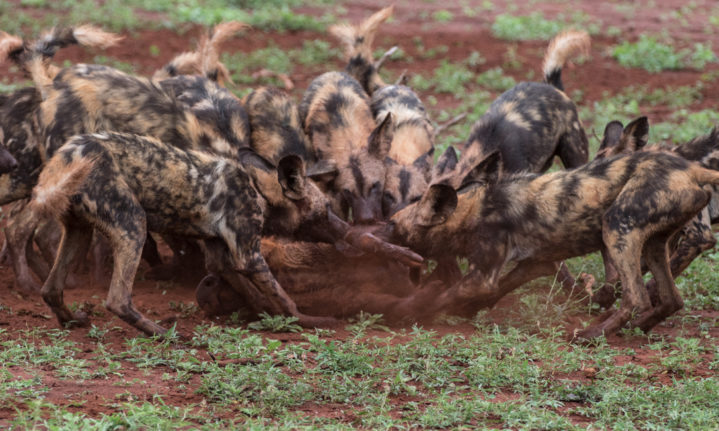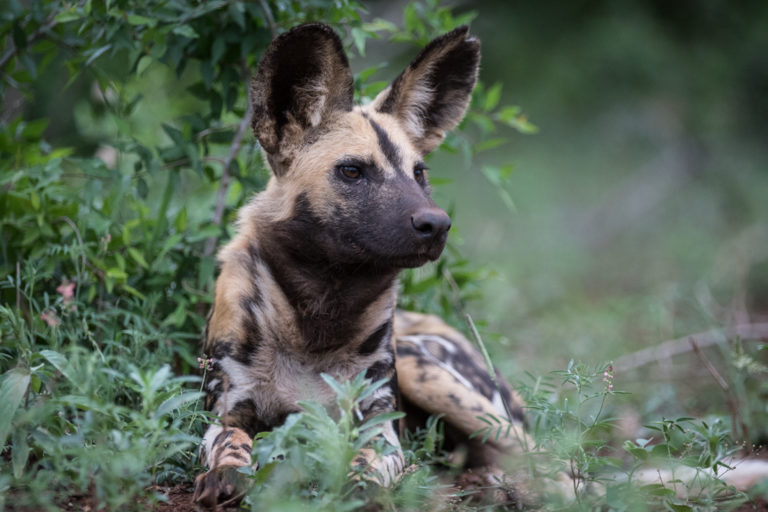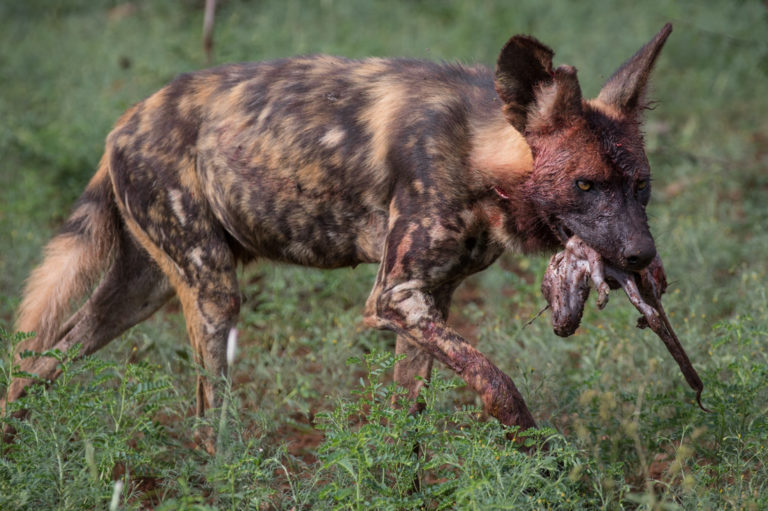The Wild dog is South Africa’s most endangered large carnivore with their satellite dish ears and their pastiche of colours, they are often called the African painted dog or painted wolf. These beautiful predators are ferocious hunters whose shrill barking can be heard for up to four kilometres.

Wild dogs are social animals with packs usually consisting of seven to ten adults, with only the dominant male and female reproducing. The entire pack plays a role in the raising of pups. Hunting together, they are the most successful of the large predators, with a hunt success rate of 80%.
Unlike Hyenas, which feast chaotically, wild dogs are more restrained. Generally the young eat first, followed by the subordinate males and females. They stuff themselves with food and go back to the den to regurgitate the remains for the mother her young.
They may have relatively good table manners, but the kill is ferocious. Wild dogs are armed with powerful jaws, and as a group they are capable of taking down animals much larger than themselves. Their hunting method usually involves tiring out the prey as they can maintain a steady pace over a very long distance. Once caught, they will often begin feeding on the prey while it is still alive. They even have specially designed molars to help them shear through meat.
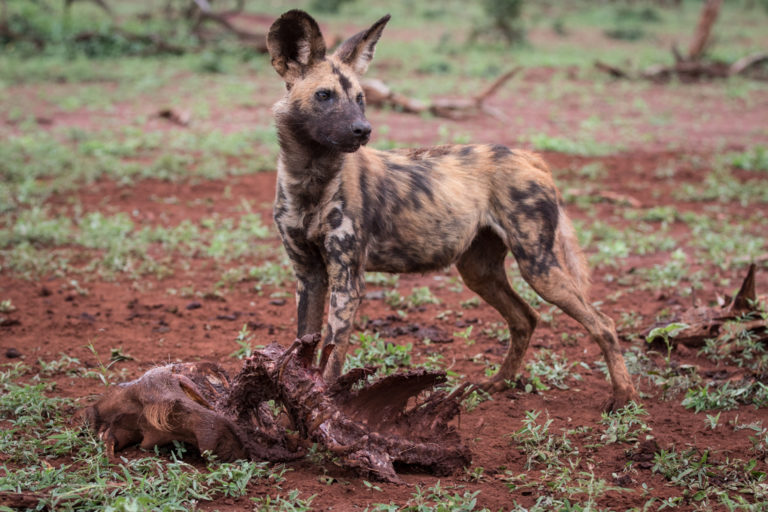
These unique animals have a significant impact on the structure and function of ecosystems. Playing a role in regulating prey species, which in turn plays an important role in shaping vegetation communities. Securing their future is therefore important in mitigating the loss of biodiversity and maintaining a balanced ecosystem.
Conservation Status
According to the IUCN red list, African wild dogs are listed as endangered with a decreasing population. They are South Africa’s most endangered large carnivore and the second most (to the Ethiopian wolf) endangered predator in Africa. Their main threats are the encroachment of their habitat and falling victim to farmers predator control mechanisms to protect livestock

In South Africa, they are listed as “specially protected” in the South African Red Data Book, designed to assess the status and threats to the animals in the country.
There are a few remaining strongholds for these animals, the most important being Ngamiland in Botswana, which includes the Okavango Delta and Chobe National Park. In South Africa, Kruger National Park is an important habitat that has seen an increase from 120 individuals in 2009 to 300-350 today.
Another region in South Africa where you can find them is the Waterberg Biosphere Reserve, which has a pack of 23 wild dogs. To celebrate these amazing animals, below are some photos taken by our editor, Anton Crone.


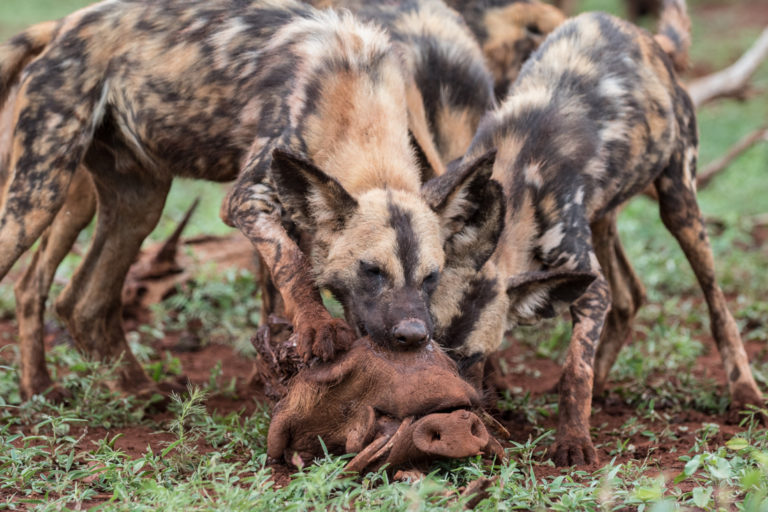
Wild dogs have specialised molars to help them tear through meat.
Interesting Facts
- They are social animals, tending to live in packs with a dominant, monogamous breeding pair.
- Wild dogs are quite the predator, with a kill rate as high as 80% per chase. In comparison, South Africa’s big cats like the lion (25%) and leopard (30-40%) don’t come close
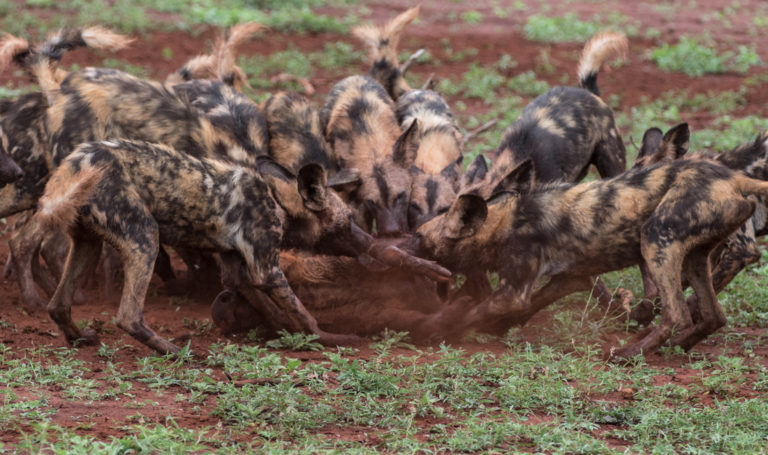
- The Wild dog is South Africa’s most endangered large carnivore and the second (to the Ethiopian Wolf) most endangered carnivore in Africa.
- These dogs differ from wolves and other dogs by having 4 toes instead of 5, lacking the fifth that other dogs have on their front paws.
- African Wild dogs have specialised molars that can shear through meat.
- Their characteristic large round ears have a double purpose. They have excellent hearing and the large ears help them cool off.
- They are fast runners, reaching up to 70km/h and have the endurance to run at high speeds for up to 5km.
Also Read:
Pictures: Anton Crone


